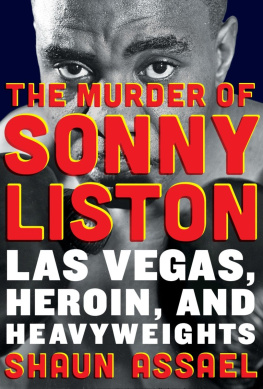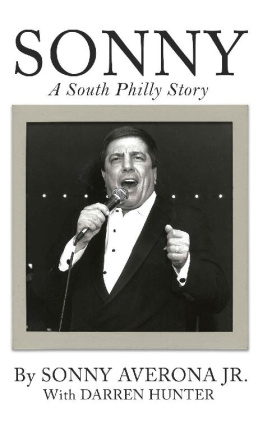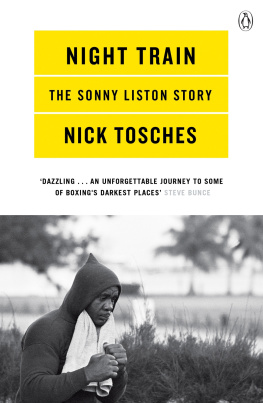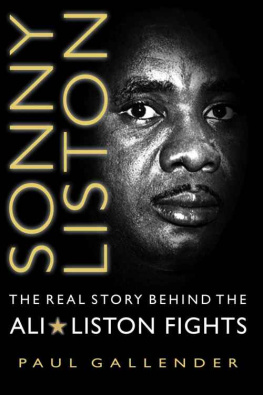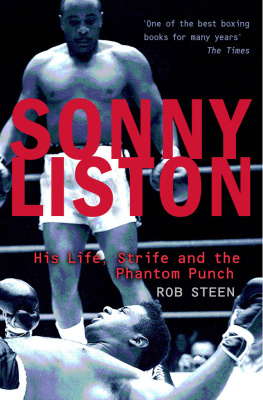INTRODUCTION
O n January 9, 1971, Geraldine Liston watched an overflow crowd at the Palm Mortuary pass by her husbands steel casket. The crowd comprised the business end of Las Vegas: showgirls, card dealers, casino execs, mob associates. Geraldine, her brown eyes hooded but sharp, studied their faces.
Some were there for the show. Stan Armstrong, a documentary filmmaker, would later recall walking a mile from his house at the age of fourteen because he knew the funeral of Charles Sonny Liston would be a piece of history. Others were there simply to be seen. Ed Sullivan, Ella Fitzgerald, and Doris Day sat in the front row while the Ink Spots did a special rendition of the 1966 hit Sunny.
The last time Geraldine saw her husband alive, she was rushing to the airport to take their adopted son, Daniel, on a family visit to St. Louis. Even closing on fifty, Sonny still looked like he was meant for only one thing. He was built like a mushroom cloud, with coal eyes that had dead reckoning in them and monstrous hands that punched with the force of a government crash test.
When she returned home from her trip, Geraldine expected to find her husband planning his next fight or maybe playing craps with his best friend, Joe Louis. Instead, she followed the smell of rotting flesh to her bedroom, where she found his corpse slumped backward over their bed. So much methane had escaped up his legs that his penis was fully engorged and his testicles were the size of pool balls.
There was an era when Sonny terrified God-fearing whites by carrying the mantle of the angriest black man in America. But that time was long gone. Since the Beatles had put him on the cover of Sgt. Pepper and the Monkees had put him in a movie, hed receded into a kind of genteel notoriety. Around Vegas, the restaurants comped him, the hookers waved as he passed by, and cops offered him rides home when he was drunk. He returned the favor by handing out preprinted business cards with his signature to tourists.
During his time in the spotlight, Sonny made it perfectly clear that he was willing to cheat on Geraldine whenever he had the chance. When a waitress presented them with a child that Sonny had fathered a few years before, Geraldine adopted the boy as her own, hoping he might finally give her the family she had always wanted. Sonny never became an ideal father, but his fragile fidelity always did lead him back home to her. And for that Geraldine remained his biggest defender. He acts like he loves me, whether he does or not, she said. He takes care of his home and thats all you can ask of a man.
On the night she found him, Geraldine let the police who were called to investigate do their work without helping too much. They walked past the stuffed bear in the living room that had Sonnys title belt wrapped around it, and into the den, where he kept his prized photos: the framed portrait with his arm around Lyndon Johnson; the one of him laughing it up with Sammy Davis Jr.; the sepia-toned keepsake of him mugging with Joe Louis when he took the crown from Floyd Patterson in 1962. The police rubbernecked, taking photos of themselves in front of the photos.
For all of its sophistication, Las Vegas was an unforgiving place in the 1960s, and it took a mean and unapologetic police force to hold it together. At the Greyhound station, plainclothes officers kept their eyes on the two-bit con men who rode in from wherever their last bit of luck had run out. As one deputy would say, We had a blue binder book that had pictures of all the known career criminals. The sheriff used to tell us, If you kick their ass enough or throw them in jail enough, theyll leave town. So whenever we saw somebody in that book, we found a way to kick their ass.
The town was deeply segregated, too. If you were black and walking down the Strip just looking at the buildings and taking pictures, the sheriffs department would take you to jail, recalls Wilbur Jackson, one of the first African-American cops in the city when he was hired in 1958. On the booking sheet, theyd write NOS. It stood for Nigger on the Strip.
In response, the residents of the Westside built their own shadow Strip along Jackson Street and filled it with rollicking jazz and bebop joints. But by 1970, Jackson Street had become a tapped-out vein running through the redlined heart of a ghetto. Riots and civic neglect transformed the area into a badland where few without business dared to go. Sonny, of course, feared no one, and consequently made the Westsides best-known lounge, the Town Tavern, his home away from home.
On Christmas Day 1970, Sonny walked into the tavern with a white showgirl on each arm and ran into Clyde Rabbit Watkins, a former pool hustler who worked as a bellman at Caesars Palace. Watkins had met Sonny when he moved to town in 1966 and quickly became part of his entourage, jumping into Sonnys pink Cadillac when he wanted company and keeping an eye out when strangers started to get on the big mans nerves.

